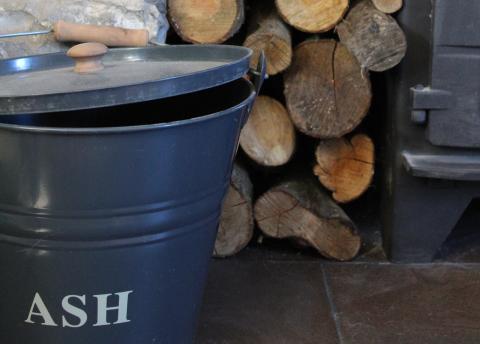
Safe storage
An average cord of wood, depending on the combustion efficiency and wood type, will yield approximately 20 pounds of ashes, the equivalent of one five-gallon pail.
To store ashes safely, remove them from your woodstove according to the manufacturer's directions and place them in a covered metal container. Store the container of ashes outdoors on a cement or brick slab at least three feet from any combustible surface.
Don't store ashes on a wooden deck or porch. Even though the ashes may appear cold, buried embers may still be capable of starting a fire. Don't spread the ashes for at least a month after removing them from the stove, and spread them on a windless day.
Using wood ashes
Our ancestors used wood ashes in many ways, and some thrifty rural folks still use them similarly:
- To produce lye for soapmaking.
- Sprinkled on paths and driveways for winter traction.
- For scouring pots and pans.
- For cleaning glass, silver and pewterware.
- Tossed into a "scalding barrel" to help remove the hair when butchering hogs.
Lawn and garden use
The most common way to dispose of a quantity of hardwood ashes from home woodstoves is to use them as a lawn and garden soil amendment.
Wood ash raises the pH, or alkalinity, of the soil in much the same way as limestone. However, unlike limestone, which can take six months or more to change soil pH, wood is highly water soluble and changes the soil pH very rapidly. This can cause problems, as a soil pH over the optimum level can affect plants adversely.
You can safely apply 20 pounds of wood ashes per 1000 square feet (one five-gallon pail full of wood ash) to most lawn or garden areas each year without raising the pH unduly. But don't apply ashes to soils that grow acid-loving plants such as blueberries, rhododendrons, azaleas, and hollies. Wood ash also supplies potassium and other essential minerals to the soil. Be sure to mix the ashes into the soil thoroughly before planting.
It's important to have your lawn and garden soil tested every two or three years to determine the optimum amounts of fertilizer and amendments such as wood ashes it needs for optimum plant growth.